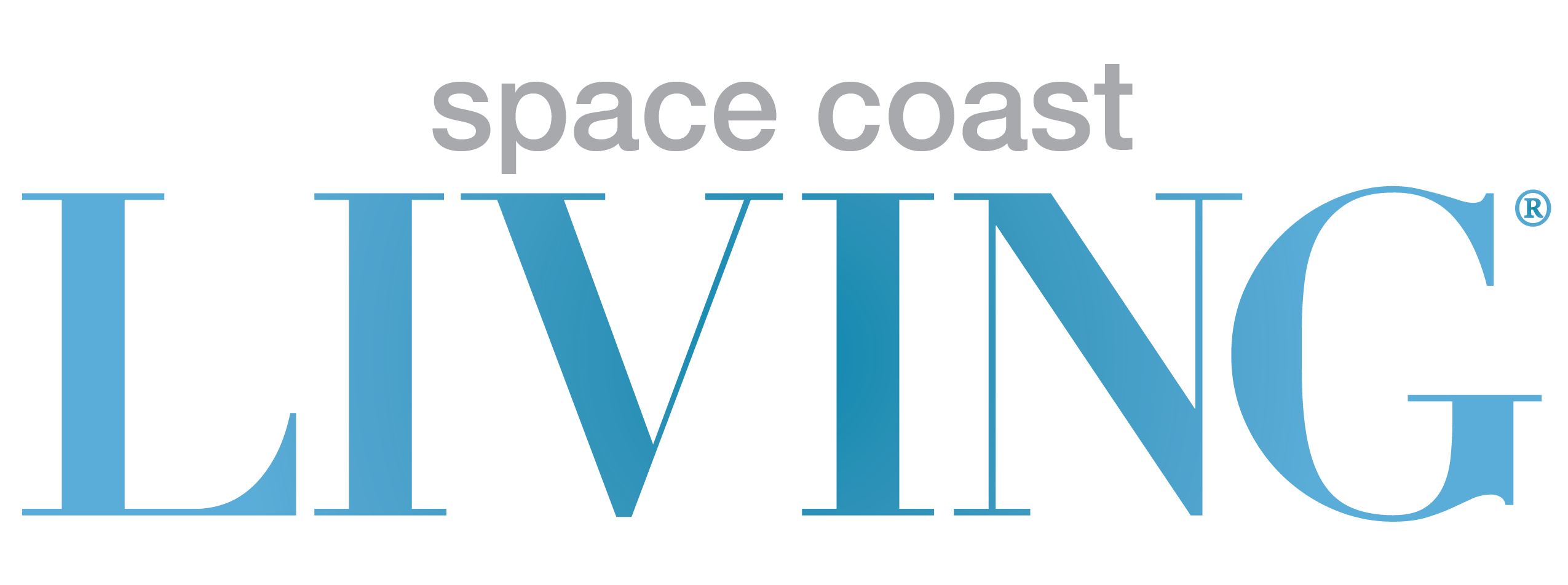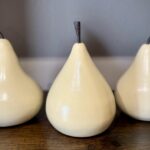Growing Stronger
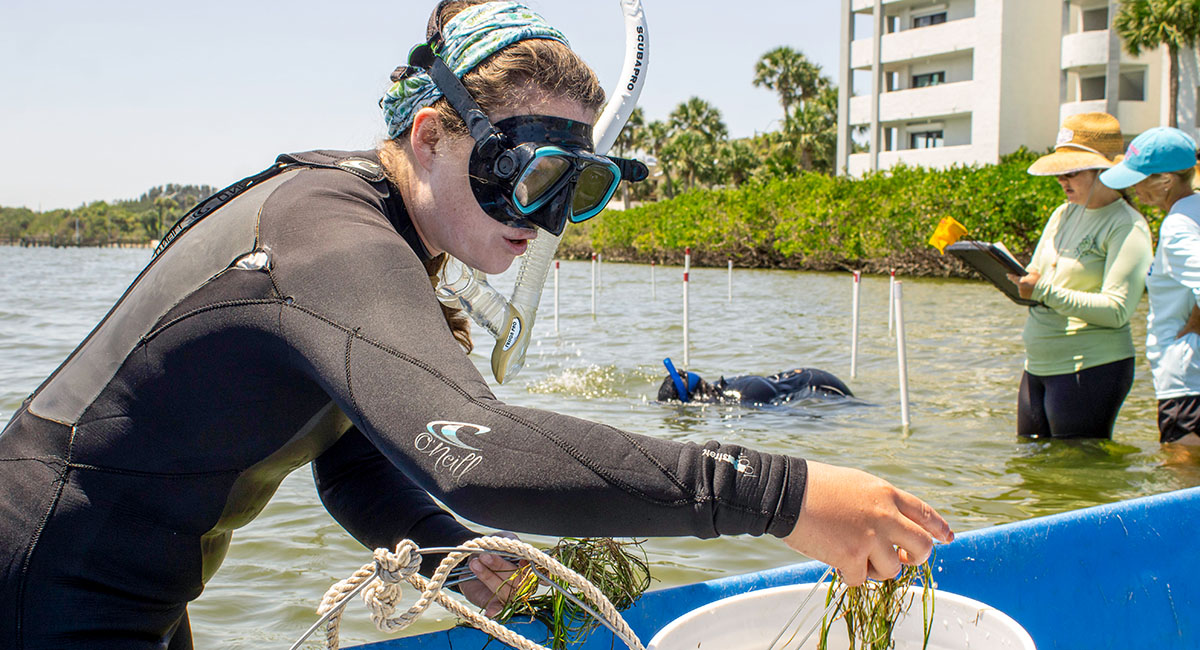
Volunteers with Restore Our Shores plant seagrasses in the Indian River Lagoon near Palm Bay. Restore our Shores is one of many conservation projects coordinated by Brevard Zoo. Pollution in the lagoon is blamed for the loss of seagrasses, which provide food for manatees and serve as a nursery for young fish. BREVARD ZOO
Brevard Lagoon seagrass making a comeback with a little help from its friends
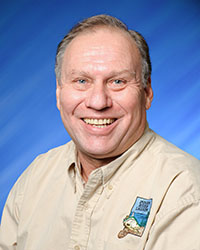
Chuck Jacoby, supervising environmental scientist for St. Johns River Water Management District, says improved lagoon water quality has helped the seagrass resurgence.
There are encouraging signs from the Indian River Lagoon cleanup in Brevard County: A St. Johns River Water Management District survey shows new seagrass growth in some areas. Pollution in the lagoon has been devastating to seagrass, which provides protection for juvenile fish, as well as being the primary food for manatees. Their large death toll in Brevard County over the last two years has mostly been due to starvation.
But a voter-approved sales tax to pay for lagoon restoration has brought in more than $340 million since 2017. This money funds efforts such as dredging muck off the lagoon bottom, as well as reducing pollution from stormwater drainage and septic systems. Cities along the shores of the lagoon have been working on their own restoration programs.
Chuck Jacoby, supervising environmental scientist for the St. Johns River Water Management District, says a lot of the new seagrass is being found in the Mosquito Lagoon area. He called it “really encouraging.” Mosquito Lagoon has broad shallow shelves, an environment that seagrass likes. The most common seagrass in the lagoon is shoal grass [Halodule wrightii]. Less common is star grass [Halophila engelmannii]. Shoal grass grows stalks about 10 inches long. It’s considered a pioneer grass in disturbed areas. Star grass has leaves but doesn’t release seeds.
Some of the seagrass comeback can be contributed to improved water quality. Jacoby says there has been a noticeable improvement in the past two years in some areas of the lagoon. That means there’s more light filtering through to the bottom of the lagoon. “When seagrasses get enough light, they can cope with just about anything,” he says.
“We have a long way to go to reverse decades of pollution,” writes Virginia Barker, director of the Brevard County Natural Resources Management Department, which is managing the county’s lagoon cleanup, via email. “But the seagrass growth witnessed in 2023 demonstrates that the lagoon can heal if we continue working together to reduce sewage, septic and stormwater pollution; keep removing polluted mucky sediments from the lagoon; and keep restoring shorelines and shellfish that filter pollution naturally.”
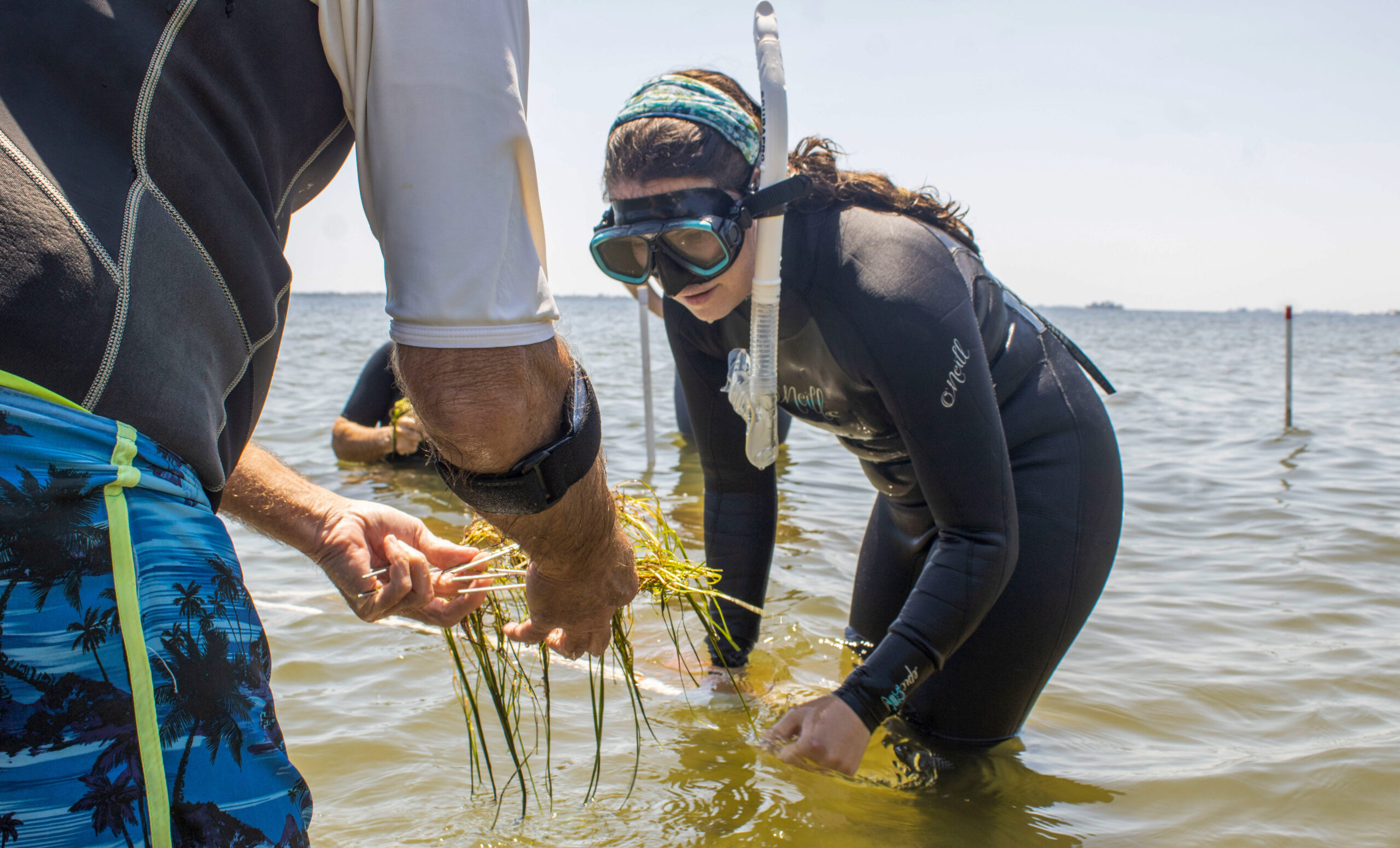
Restore Our Shores volunteers working in the lagoon at Palm Bay are fighting to reverse decades of pollution which has curtailed seagrass growth. BREVARD ZOO
MIXED RESULTS
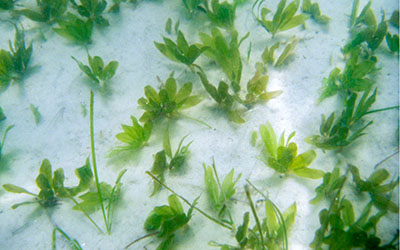
New star grass growing in the Indian River Lagoon. ST. JOHNS RIVER WATER MANAGEMENT DISTRICT PHOTOS
While Mosquito Lagoon is improving, the same can’t be said for the Banana River and Indian River sections of the lagoon in central and southern Brevard County. Jacoby says those areas of the lagoon have a less than 5 percent coverage of seagrass, mainly due to algae blooms blocking sunlight needed for seagrass growth.
While some of the seagrass growth comes naturally, $4.5 million in grants to the National Estuary Program are funding plantings in sections of the lagoon. The Brevard Zoo’s Restore Our Shores program planted 24 beds of seagrasses last spring in a section of the lagoon at Palm Bay. Regular surveys since have found noticeable growth. “We’re impressed with rapid growth at multiple sites,” says Olivia Escandell, who leads the program.
For southern areas of the lagoon along the Treasure Coast, agencies with the seagrass grants are Florida Atlantic University-Harbor Branch in Fort Pierce, and Florida Oceanographic Society in Stuart. Jacoby describes the lagoon in the Vero Beach area and to its south as “staying steady,” thanks to fewer algae blooms.
“We’ve seen a lot of substantial resources put into the lagoon,” Jacoby says. But he points out that these efforts are merely giving nature the boost it needs to make the improvements sustainable.
“Ecological systems are pretty amazing,” he says, “if we just get out of their way.”
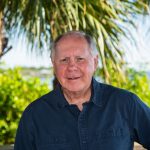
Fred Mays
Fred Mays is a freelance writer and photographer who resides in Satellite Beach. He is a retired television journalist, and active on media issues with the Brevard Indian River Lagoon Coalition. His blog is www.floridaunplugged.net.
